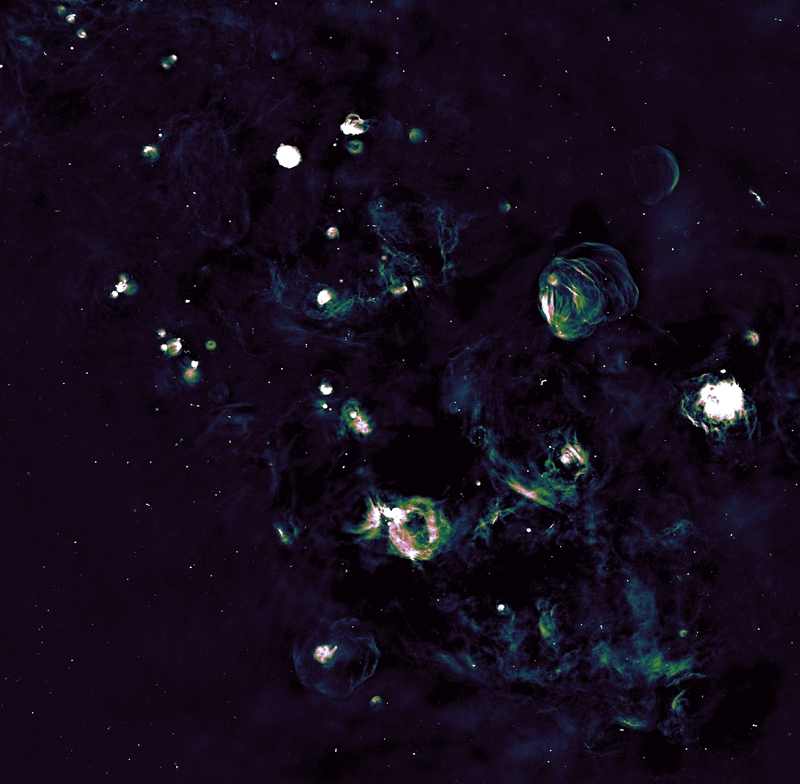Models of the universe predict that supernova remnants should be far more common than they are. Now, a new image from sensitive radio telescopes reveal that the missing remnants are hiding in plain sight.
When many stars reach the end of their lives, they explode as a supernova, leaving behind an expanding cloud of material. But the story isn’t that simple – based on the age and density of the Milky Way, astronomers calculate that we should see up to five times more supernova remnants than have been discovered so far. That raises the obvious question – where are they all?
As it turns out, supernova remnants have been there all along – they’re just invisible to most of our instruments. To spot them, astronomers combined observations from two radio telescopes in Australia, the famous Parkes dish and ASKAP, which each have different advantages. Parkes is able to capture broader data, while ASKAP’s snaps are higher resolution and provide very fine detail.
With their powers combined, the two radio telescopes mapped out a region of around 1% of the galactic plane of the Milky Way. Seven supernova remnants are usually visible in this area, but the new image revealed more than 20 new ones. The brighter blobs in the image are the supernova remnants, while the green smear represents hydrogen gas between them, which can fuel the birth of new stars.

The ghostly gas clouds come into focus thanks to the combined strengths of each radio telescope. In the Parkes image, the region appears as little more than a greenish fog with two red glowing orbs. The ASKAP image shows the detail of the remnants, but misses the bigger picture behind how they’re connected. Together though, the images reveal an invisible stellar graveyard.
And this is just the beginning. Both telescopes are currently being used for long-term projects that will map out much of the Milky Way, capturing an area around 100 times bigger than this image with the same level of detail. That should reveal as many as 1,500 new supernova remnants, the team says.
Sources: CSIRO, The Conversation




